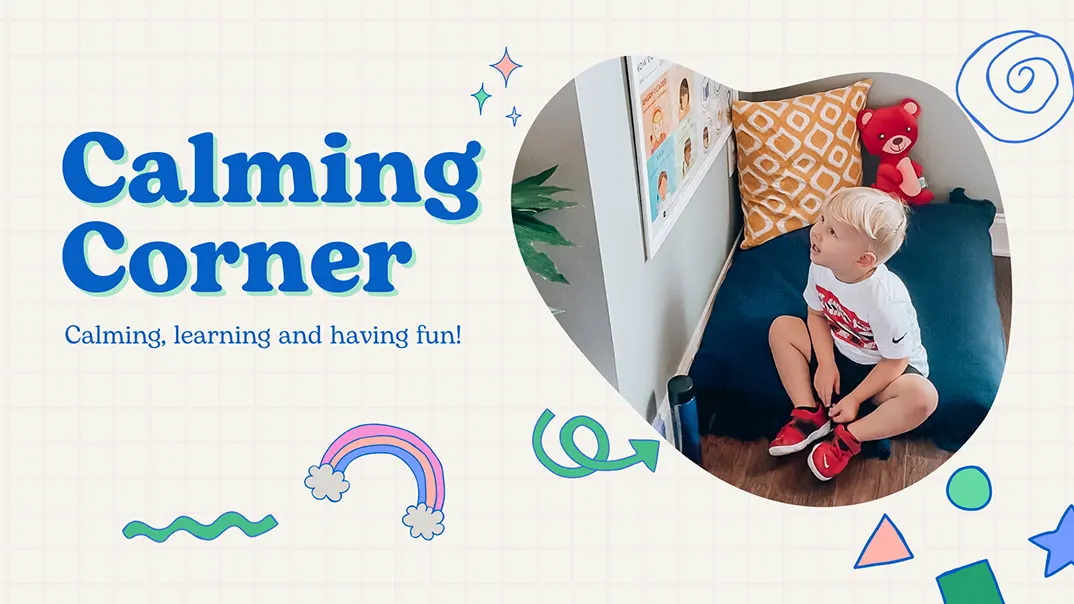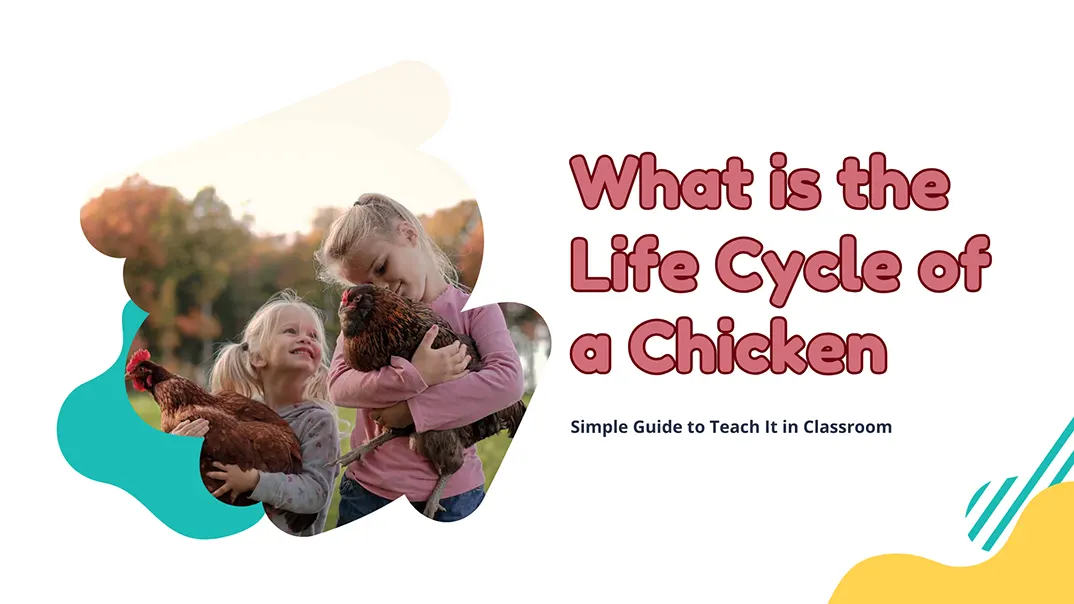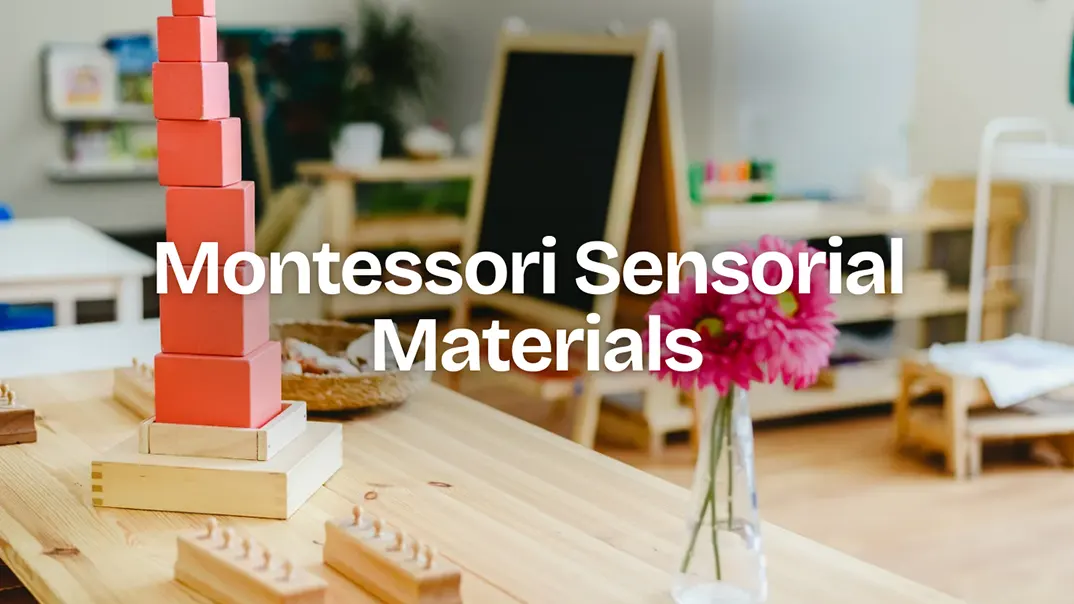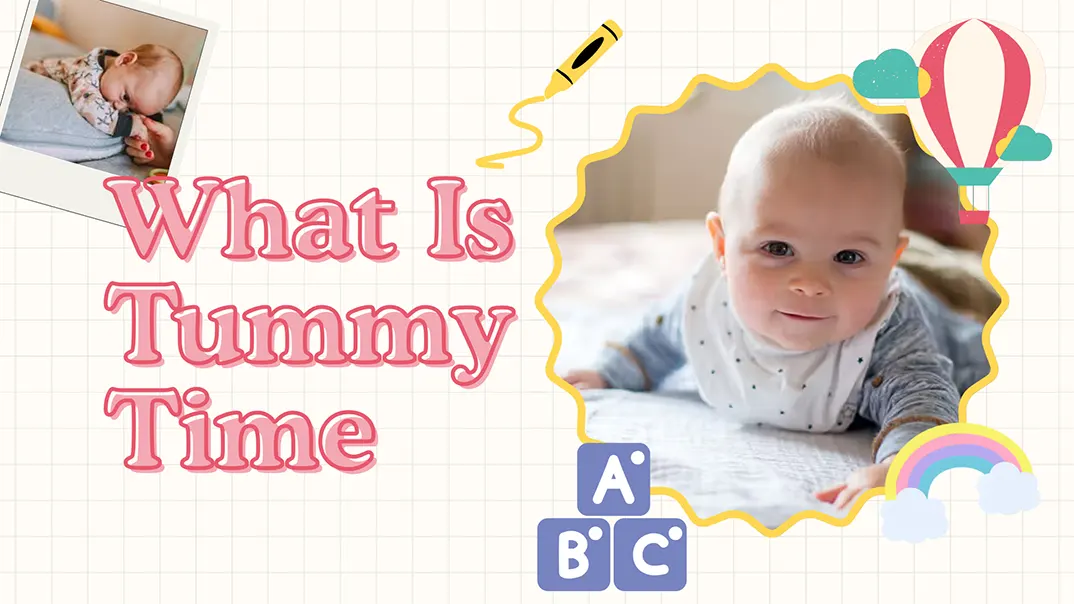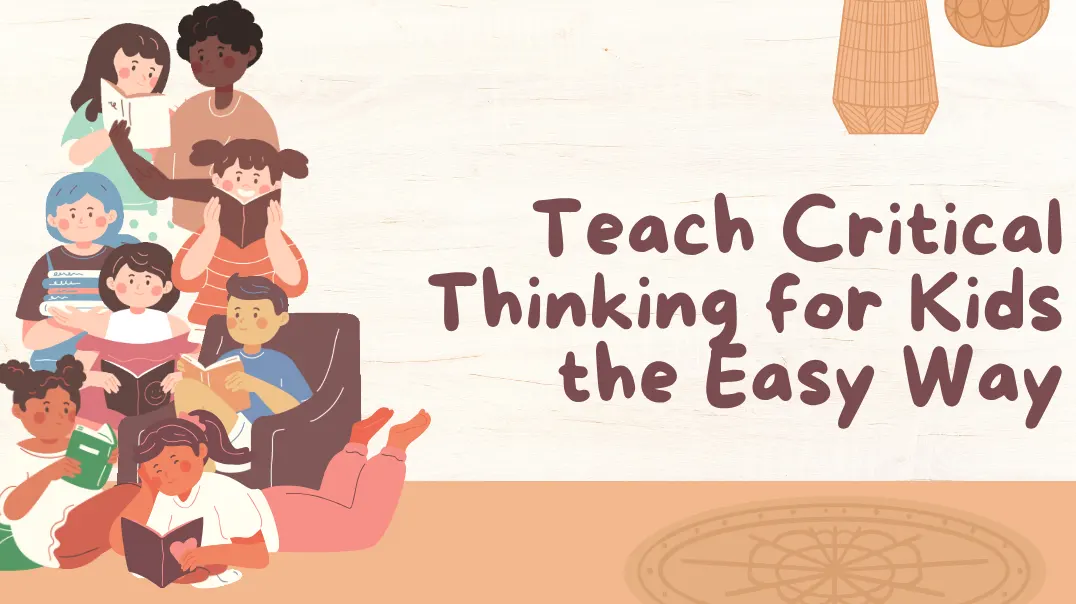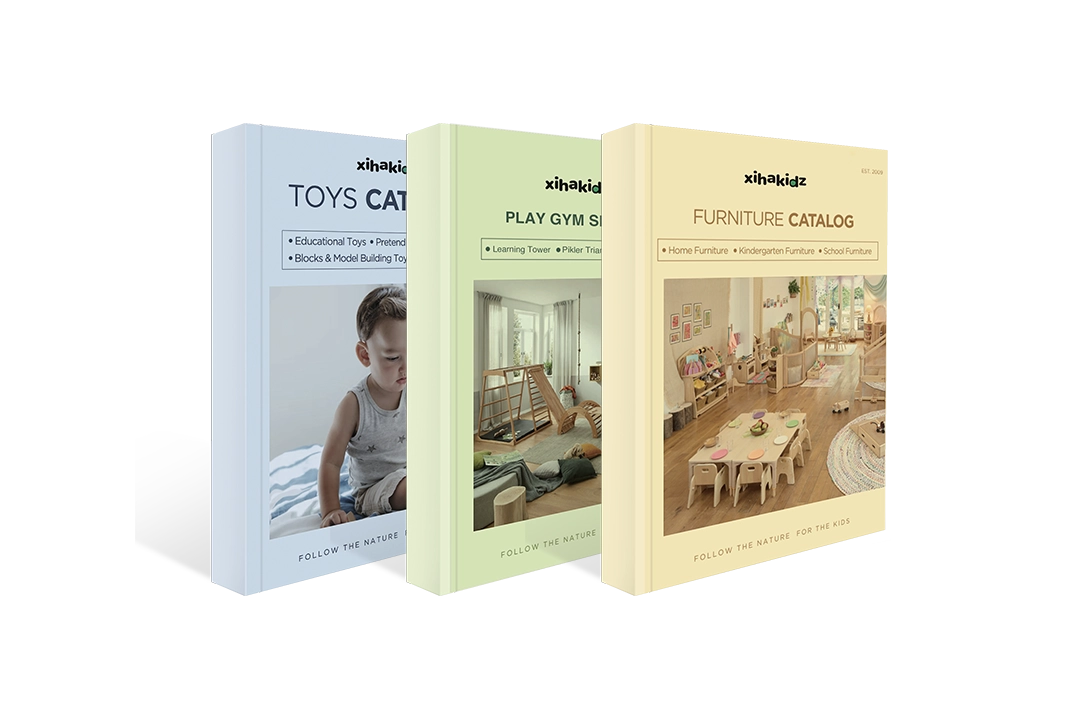Vous cherchez un moyen d'aider vos enfants à gérer efficacement leurs émotions ? Vous souhaitez réduire le stress et les perturbations dans votre classe ? Vous avez du mal à créer un environnement propice au développement de l'intelligence émotionnelle ?
Un coin détente est un espace essentiel dans les classes, notamment dans les écoles Montessori et préscolaires, pour encourager l'autorégulation émotionnelle et la pleine conscience. Un aménagement réfléchi de cet espace donne aux enfants les outils nécessaires pour gérer efficacement leurs émotions fortes.
Continuez à lire pour découvrir des conseils étape par étape sur la mise en place d’un coin apaisant, ses avantages et comment assurer son succès dans votre environnement éducatif.
Qu'est-ce qu'un coin apaisant ?
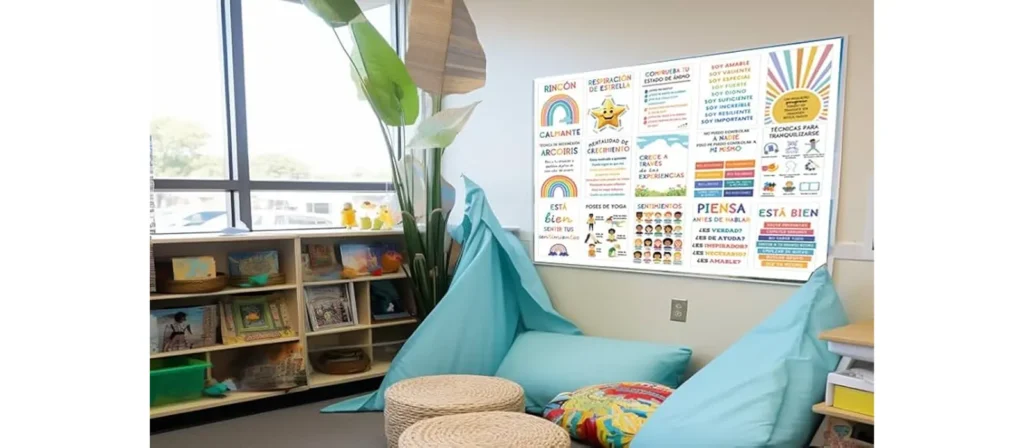
UN coin calme C'est un espace calme et sécurisé, en classe ou à la maison, où les enfants peuvent se réfugier pour réguler leurs émotions. Cet espace est conçu pour être réconfortant, avec des outils comme des affiches de coin détente, des objets sensoriels et du mobilier favorisant la relaxation. Les idées pour créer un coin détente incluent souvent des objets tactiles, des visuels comme des tableaux d'émotions et des sièges moelleux pour créer un environnement détendu.
Les enfants d'âge préscolaire et de maternelle développent encore leur intelligence émotionnelle. Ils se sentent souvent submergés par des émotions fortes comme la colère, la tristesse ou la frustration, mais manquent d'outils pour les exprimer ou les gérer. Un coin détente offre un exutoire positif à ces sentiments.
La différence entre un coin détente en classe et un temps mort classique réside dans l'intention. Un coin détente en classe est stimulant, et non punitif, et offre aux enfants la possibilité d'apprendre des mécanismes d'adaptation de manière bienveillante.
Dans l'éducation Montessori, l'intelligence émotionnelle est tout aussi importante que l'apprentissage scolaire. Un coin détente s'inscrit dans ces principes en favorisant la régulation émotionnelle et la conscience de soi. Lorsque les enfants se sentent dépassés, frustrés ou anxieux, ils peuvent se réfugier dans cet espace pour se calmer, réfléchir à leurs émotions et se recentrer.
Pourquoi les enfants ont besoin d'un coin apaisant — Du point de vue d'un enfant
Parfois, quand on est enfant, il est difficile de contrôler ses émotions. En colère, triste ou inquiet, on a envie de crier, de pleurer, voire de se cacher. Ces sentiments sont normaux, et tout le monde en a ; les enfants ne savent simplement pas toujours comment les gérer. C'est précisément pourquoi un coin détente est si important. C'est un endroit privilégié qui aide les enfants à se sentir compris et leur apprend à gérer leurs émotions plus sainement.

1. Un endroit pour « faire une pause »
Lorsque les enfants se sentent dépassés émotionnellement, ils ont souvent du mal à gérer leurs émotions. Un coin apaisant leur offre un espace dédié pour prendre du recul et faire une pause.
- Aucune pression pour expliquer:Dans le coin détente, on n'attend pas des enfants qu'ils expliquent leurs émotions ou les expriment immédiatement. Ils peuvent simplement s'asseoir avec leurs émotions sans être obligés d'agir ou de réagir.
- Il est temps de réfléchir:Le coin apaisant offre aux enfants une pause dans la vague d'émotions, leur permettant de réfléchir et de retrouver leur calme avant de s'engager avec les autres ou de poursuivre leurs activités.
2. Des aides émotionnelles m'attendent
Il existe de nombreux « outils secrets » dans un coin apaisant pour aider les enfants à gérer leurs grandes émotions :
- Oreillers ou couvertures moelleux:Quand j'ai besoin de réconfort, je peux serrer un oreiller dans mes bras ou m'envelopper dans une couverture, et j'ai l'impression de recevoir une étreinte chaleureuse.
- Bouteilles d'émotions ou sabliers:Regarder les paillettes se déposer lentement dans le flacon me donne l'impression que mes sentiments s'apaisent également.
- Cartes d'émotionsParfois, je ne sais pas ce que je ressens. Les cartes avec des petits visages m'aident à dire : « Oh, je suis anxieux » ou « Je suis triste ».
3. Aider à dire « J'ai besoin d'une pause »
Parfois, les enfants ne veulent pas dire qu'ils sont tristes ou en colère, par peur d'être grondés ou par gêne. Mais le coin détente est comme un signal unique : quand j'y vais, je dis : « J'ai juste besoin d'un peu de temps pour moi. »
- Je n'ai pas besoin de tout expliquer:Quand je vais au coin détente, mes adultes savent que j'ai besoin d'une pause. Ils ne me posent pas tout de suite une foule de questions.
- Fixer mes limites:Le coin apaisant m'aide à apprendre à prendre soin de moi et montre aux autres que j'ai besoin d'espace lorsque je suis dépassé.
4. Apprendre à gérer les « grandes émotions »
Chaque fois que je me rends dans un coin apaisant, j'apprends à mieux gérer mes émotions. C'est comme si je m'entraînais à contrôler ces émotions fortes au lieu de les laisser me contrôler.
- Trouver ce qui fonctionne pour moiCertains enfants aiment dessiner lorsqu'ils sont contrariés, tandis que d'autres préfèrent écouter de la musique apaisante. Je découvre ce qui m'aide à me sentir mieux.
- Je ne suis pas un « mauvais enfant »:Le coin apaisant m'aide à comprendre que tout le monde ressent parfois de grandes émotions, et les ressentir ne signifie pas que j'ai fait quelque chose de mal.
5. Sentez-vous plus fort
Chaque fois que je quitte ce coin apaisant, je me sens un peu plus forte. Lorsque je parviens à gérer mes émotions, je me sens plus confiante et prête à affronter d'autres défis.
- Je peux résoudre des problèmes de manière autonome:Le coin apaisant m'aide à réaliser que je n'ai pas toujours besoin de quelqu'un pour me sentir mieux.
- Je m'améliore:Au fil du temps, j’ai besoin de moins de temps dans un coin calme et j’apprends à gérer mes sentiments plus rapidement.
Avantages d'un coin apaisant pour les enfants d'âge préscolaire
Un coin détente en classe est bien plus qu'un simple espace de calme : c'est un outil transformateur pour développer l'intelligence émotionnelle et créer un environnement d'apprentissage harmonieux. Voici pourquoi chaque école maternelle ou classe devrait en avoir un :
Soutient l'apprentissage
Les enfants qui se sentent équilibrés émotionnellement sont mieux préparés à se concentrer et à assimiler de nouvelles informations. Un coin détente bien aménagé en classe contribue à un environnement où développement scolaire et développement émotionnel vont de pair.
Favorise la régulation émotionnelle
Les jeunes enfants apprennent encore à reconnaître et à gérer leurs émotions. Un coin détente propose des outils et des stratégies, comme des objets sensoriels et des affiches, qui les guident vers l'apaisement et la reprise de contrôle. Cela favorise le développement émotionnel et la résilience.
Réduit les perturbations en classe
Les débordements émotionnels peuvent perturber l'apprentissage de toute la classe. En créant un coin détente, les enfants disposent d'un espace pour exprimer leurs émotions sans compromettre la progression du groupe. Cela permet de réduire les interruptions et de fluidifier la gestion de la classe.
Encourage l'autonomie
Un coin détente en classe permet aux enfants de gérer leurs émotions de manière autonome. Ils peuvent apprendre à s'autoréguler grâce à des ressources comme des fiches imprimables et des exercices de respiration, plutôt que de dépendre uniquement de l'intervention de l'enseignant.
Favorise un environnement positif
La présence d'un coin détente témoigne de l'importance accordée à la santé émotionnelle. Cela favorise une atmosphère d'empathie, de compréhension et de respect mutuel, bénéfique pour l'ensemble de la communauté scolaire.
Guide étape par étape pour créer un coin apaisant
Créer un coin apaisant chez vous ou en classe peut contribuer à réduire le stress, à améliorer la concentration et à favoriser la régulation émotionnelle. Suivez ces étapes simples pour créer un espace paisible adapté à vos besoins :
Étape 1 : Choisissez l'emplacement idéal
Commencez par identifier un endroit approprié pour votre coin détente. L'endroit doit être intime, mais pas isolé. Il doit être calme, loin de l'agitation des zones de passage comme les entrées, les zones d'activités de groupe ou les appareils bruyants. Un coin dans une salle de classe, un petit recoin de la maison, ou même un espace partiellement clos peuvent faire l'affaire.
Si possible, sélectionnez un espace avec lumière naturelleAssurez-vous toutefois que l'éclairage soit réglable, car un environnement trop lumineux peut surstimuler les enfants. L'ajout de rideaux ou de lumières à intensité variable peut aider.
Étape 2 : Définir les limites de l'espace
Les enfants se sentent en sécurité lorsqu'ils connaissent leurs limites. Utilisez des petits meubles, des tapis de sol ou des cloisons souples pour délimiter le coin détente. Cela crée une atmosphère chaleureuse et intime tout en permettant une bonne visibilité pour la surveillance.
Par exemple, vous pouvez utiliser des étagères, des rideaux ou des panneaux pour délimiter l'espace. Pour les plus jeunes, gardez l'espace ouvert et accueillant afin de favoriser l'exploration tout en créant une atmosphère distincte du reste de la pièce.
Étape 3 : Choisissez des couleurs et une décoration apaisantes
La palette de couleurs de votre coin détente joue un rôle important pour créer le ton idéal. Choisissez des tons doux, neutres ou pastel comme le bleu clair, le vert et le beige pour favoriser la détente et le calme. Évitez les couleurs trop vives ou audacieuses, car elles peuvent surstimuler.

Vous pouvez également ajouter une décoration simple inspirée de la nature, comme des images d'arbres, de montagnes ou de l'océan. Un éclairage tamisé, comme des guirlandes LED ou de petites lampes de table, apporte chaleur et sécurité.
L’ajout d’éléments de décoration pédagogique, tels que des tableaux d’émotions ou des affiches d’affirmations positives, peut intégrer l’apprentissage dans un environnement de classe.
Étape 4 : Ajoutez des meubles et un revêtement de sol confortables
Le coin détente doit inviter les enfants à se détendre physiquement. Ajoutez des éléments doux, meubles pour enfants Comme des poufs, des coussins de sol ou des petits canapés. Un tapis moelleux ou un matelas rembourré peuvent rendre l'espace confortable pour les enfants qui préfèrent s'asseoir ou s'allonger.
Assurez-vous que tout meubles et matériaux sont sûrs, durables et faciles à nettoyer. Par exemple, optez pour des tissus hypoallergéniques ou des housses lavables en machine pour préserver l'hygiène de la zone.
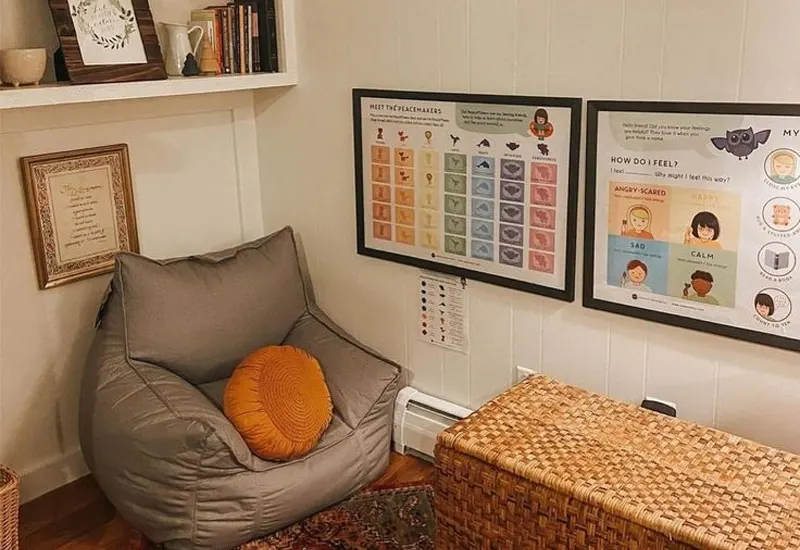
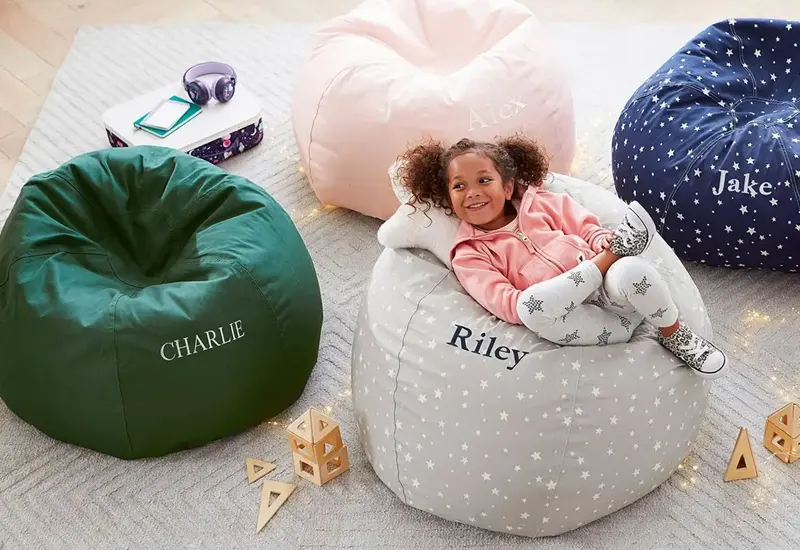
Étape 5 : Remplissez l'espace avec des outils sensoriels
Outils sensoriels sont indispensables dans tout coin détente. Ces objets aident les enfants à gérer leurs émotions par le toucher, le son ou le mouvement. Proposez un mélange d'objets sensoriels, tels que :
- Soulagement du stress : Balles anti-stress, fidget spinners ou bouteilles sensorielles remplies de paillettes ou de liquide.
- Articles pondérés : Petites couvertures lestées, animaux en peluche ou coussins pour genoux pour procurer une sensation d’ancrage.
- Éléments de texture : Jouets moelleux, animaux en peluche doux ou oreillers texturés pour une stimulation tactile.
Vous pouvez organiser ces outils dans un petit panier ou une étagère afin que les enfants puissent facilement choisir leurs besoins.



Étape 6 : Fournir des aides émotionnelles et visuelles
Aidez les enfants à identifier et à exprimer leurs émotions avec des aides visuelles telles que :
- Tableaux d'émotions : Un tableau simple avec des visages montrant différentes émotions (par exemple, heureux, triste, frustré) pour aider les enfants à nommer leurs sentiments.
- Guides de respiration : Cartes ou affiches qui enseignent des exercices de respiration profonde pour aider les enfants à se calmer.
- Livres sur les sentiments : Des livres d'histoires sur les émotions et l'autorégulation que les enfants peuvent lire ou explorer de manière autonome.
Placez ces matériaux au niveau des yeux pour plus d’accessibilité, en veillant à ce que les enfants puissent interagir avec eux de manière autonome.
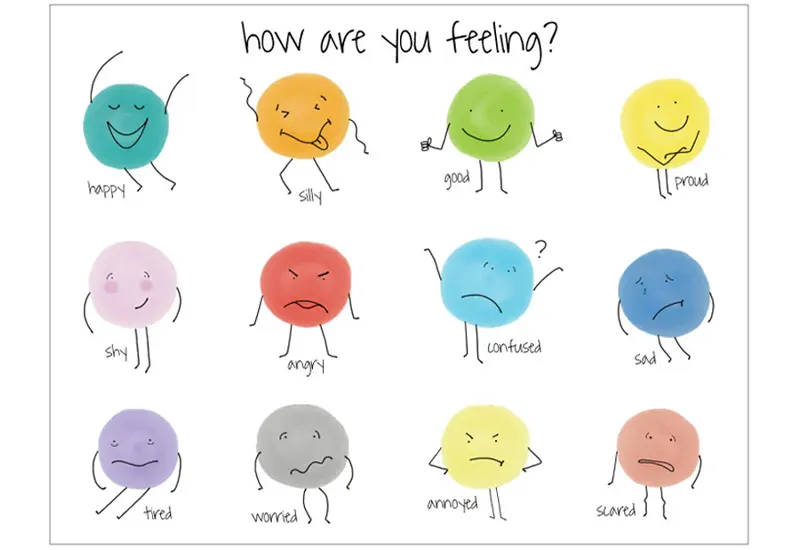
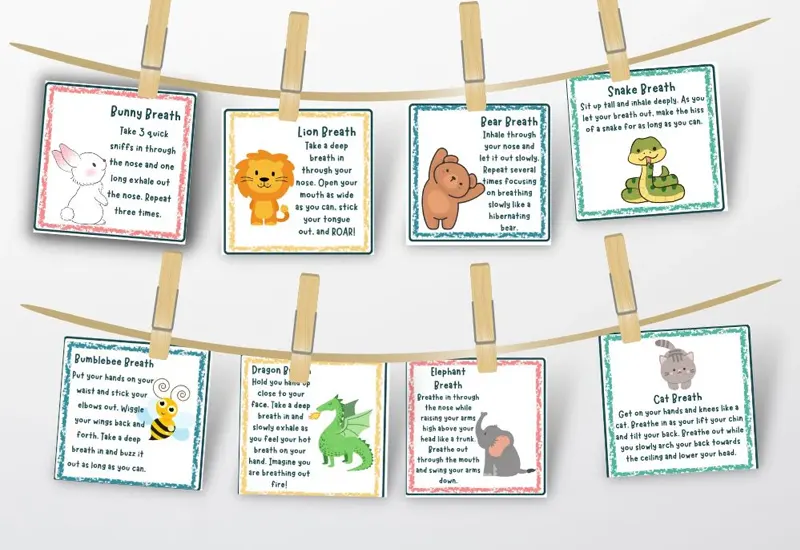
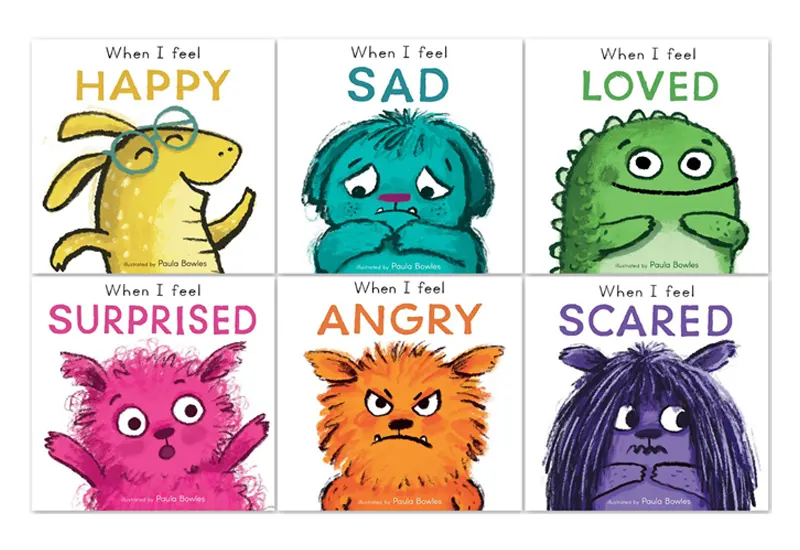
Étape 7 : Incorporez des sons et de la musique apaisants
Un coin apaisant n'est pas complet sans son. Utilisez une petite machine à bruit blanc, une enceinte Bluetooth ou un lecteur MP3 préchargé pour diffuser des sons doux. Des options comme les vagues de l'océan, le chant des oiseaux ou une musique instrumentale apaisante peuvent renforcer la sensation de tranquillité.
Maintenez le volume bas et constant, car les bruits forts ou soudains peuvent perturber l’effet apaisant.
Étape 8 : Inclure des activités simples et calmes
Les enfants se calment souvent plus efficacement avec une activité stimulante, mais peu stimulante. Aménagez le coin détente avec des activités comme :
- Livres de coloriage et crayons.
- Des puzzles simples ou des jouets à empiler.
- Journaux et stylos pour que les enfants plus âgés puissent exprimer leurs sentiments par l'écriture ou le dessin.
Faites tourner les activités régulièrement pour garder l’espace frais et accueillant.

Étape 9 : Enseigner l’objectif et les lignes directrices
Présentez le coin détente aux enfants de manière positive. Expliquez-leur qu'il s'agit d'un espace sûr où ils peuvent faire une pause lorsqu'ils se sentent dépassés ou ont besoin de se détendre. Assurez-vous qu'il ne s'agit pas d'un lieu de punition ou d'isolement.
Étape 10 : Personnaliser l'espace
Enfin, les coins détente doivent pouvoir évoluer en fonction des besoins et des préférences des enfants qui les utilisent. Observez ce qui fonctionne et ce qui ne fonctionne pas, et demandez leur avis. Vous pouvez même les impliquer dans le processus de conception en les laissant choisir les objets, les couleurs ou les activités à inclure dans l'espace.
Transformez votre salle de classe avec des solutions de mobilier personnalisées
Idées de décoration créatives pour un coin apaisant
Grâce à une conception réfléchie, vous pouvez transformer un espace simple en un havre de paix imaginatif, apaisant et inspirant. Des aménagements thématiques comme « Refuges Océaniques » aux murs sensoriels interactifs et aux touches personnalisées, des décorations créatives peuvent transformer un coin détente en un espace magique où les enfants se sentent libres d'explorer et de gérer leurs émotions.
Créer un design thématique
Concevoir votre coin apaisant Un thème spécifique peut rendre l'espace plus attrayant pour les enfants. Parmi les options les plus populaires, on trouve un « Refuge océanique », avec des bleus doux, des motifs de vagues et des coquillages, ou un « Refuge forestier », avec de la verdure, des textures boisées et des autocollants d'arbres. Un thème renforce l'attrait visuel et crée une atmosphère immersive qui aide les enfants à se détendre et à se concentrer.
Ajouts à la nature
Intégrer des éléments naturels est une façon simple et efficace de sublimer votre coin détente. Ajoutez de petites plantes adaptées aux enfants, des pierres décoratives ou même des bûches décoratives pour apporter l'essence apaisante de la nature à votre intérieur. Ces touches naturelles créent un effet apaisant, rendant l'espace plus serein et connecté à son environnement.
Décor interactif
Des éléments interactifs comme des tableaux noirs, des tableaux magnétiques ou des murs sensoriels rendent le coin détente plus dynamique, en classe ou à la maison. Les enfants peuvent utiliser ces outils pour exprimer leurs émotions par des dessins ou des mots. L'ajout d'affirmations ou de messages apaisants au tableau encourage la pleine conscience tout en rendant le coin stimulant.
Affiches personnalisées
Personnaliser l'espace avec des affiches apaisantes peut le rendre plus accueillant et adapté aux enfants. Intégrez des tableaux d'émotions, des exercices de respiration étape par étape ou des affirmations positives qui résonnent chez l'enfant. Permettre aux enfants de participer à la création de leurs affiches ajoute une touche personnelle et favorise un sentiment d'appropriation de l'espace.
Règles et directives pour l'utilisation du coin apaisant
Le Coin Calme est une excellente ressource dans des contextes comme les écoles et les centres thérapeutiques pour aider les individus, en particulier les enfants, à gérer leurs émotions et leurs comportements. Voici quelques règles et directives à établir pour garantir son utilisation efficace et sécuritaire :
1. Présentez le coin apaisant avec un objectif précis
Commencez par expliquer aux enfants la raison d'être du coin détente. Utilisez un langage simple et clair pour qu'ils en comprennent l'objectif :
- Le coin apaisant leur permet de se sentir en sécurité et calme lorsque les émotions semblent accablantes.
- Ce n’est pas une punition ni un lieu de jeu.
- Ils peuvent l’utiliser pour pratiquer des techniques apaisantes comme la respiration profonde ou des outils sensoriels.
Une introduction positive aide les enfants à associer l’espace aux soins personnels et à la croissance émotionnelle.
2. Déterminez quand utiliser le coin apaisant
Définissez des scénarios spécifiques dans lesquels les enfants sont encouragés à utiliser le coin calme :
- Lorsqu’ils se sentent contrariés, en colère ou dépassés.
- Quand ils ont besoin d’un moment de calme pour se recentrer.
- Après un conflit, il faut se calmer avant d'en discuter.
Faites savoir aux enfants qu’ils peuvent demander à utiliser le coin apaisant chaque fois qu’ils en ont besoin, favorisant ainsi un sentiment d’autonomie et de conscience émotionnelle.
3. Fixez des limites de temps
Bien que le coin détente soit un refuge, il ne doit pas être un lieu de repli indéfini. Fixez des limites de temps raisonnables pour que les enfants puissent reprendre leurs activités en classe :
- Pour les plus jeunes enfants, limitez le temps à 5 à 10 minutes.
- Utilisez des sabliers ou des visuels pour les aider à comprendre quand il est temps de rejoindre le groupe.
Cela garantit que le coin calme de la salle de classe reste un espace de transition plutôt qu'une évasion permanente.
4. Enseigner l'utilisation correcte des outils
Montrez aux enfants comment utiliser efficacement les objets du coin détente. Cela comprend :
- Utilisez des outils sensoriels comme des balles anti-stress, des fidget spinners ou des couvertures lestées.
- Comment interagir avec des affiches de coin apaisant (par exemple, en suivant des guides de respiration ou des tableaux d’émotions).
En modélisant ces comportements, vous donnez aux enfants les moyens d’utiliser l’espace comme prévu.
5. Formation et sensibilisation
- Éduquer tous les utilisateursAssurez-vous que tous les utilisateurs potentiels connaissent les règles et l'objectif du Coin Détente. Cela peut faire partie d'une séance d'orientation régulière en classe ou de sessions de formation spécifiques.
- Formation des enseignants et du personnel:Former les enseignants et le personnel à introduire et à utiliser efficacement le coin apaisant.
Idées de coins apaisants pour la maison
Pour créer un coin détente chez soi, simplicité et personnalisation sont essentielles. Utilisez des éléments imprimables, comme des tableaux d'émotions ou des guides de respiration profonde, pour aider les enfants à gérer leurs émotions de manière autonome. Ajoutez des éléments douillets comme une tente, des tapis moelleux et leurs livres préférés. Des touches personnelles, comme des photos de famille ou un panneau « coin détente », peuvent rendre l'espace plus accueillant.

Installation et utilisation :
- Emplacement:Choisissez un coin calme de la maison, loin des zones à fort trafic.
- Équipement:Équipez-le d'objets réconfortants tels que des peluches, des balles anti-stress, des livres intéressants, des fournitures d'art (comme des crayons de couleur et du papier), un éclairage doux et une musique apaisante.
- Règles:Les parents doivent apprendre à leurs enfants à utiliser correctement le coin apaisant, en s'assurant qu'ils comprennent qu'il s'agit d'un espace sûr pour exprimer et gérer leurs sentiments, et non d'une zone de punition.
Lignes directrices :
- Utilisation volontaire:Encouragez les enfants à utiliser le coin volontairement lorsque cela est nécessaire.
- Gestion du temps:Introduisez une limite de temps flexible, en fonction des besoins de l’enfant, mais encouragez-le à ne pas dépendre excessivement de l’espace.
- Respect de la vie privée:Les membres de la famille doivent respecter l’intimité de toute personne utilisant le coin, en le gardant comme une zone sans perturbation.
Transformez votre salle de classe avec des solutions de mobilier personnalisées
Coin apaisant en classe pour les tout-petits
Aménager un coin détente pour les tout-petits en classe nécessite des outils et des supports visuels adaptés à leur âge. Utilisez des affiches pour illustrer des exercices de respiration simples ou des expressions faciales. Ajoutez des jouets sensoriels, des sièges moelleux et un panneau préscolaire pour indiquer l'objectif. Un coin détente pour la maternelle peut également intégrer une poubelle sensorielle ou un casque antibruit pour les petits trop stimulés.
Installation et utilisation :
- Emplacement:Idéalement placé dans une salle de classe calme ou une salle calme désignée.
- Équipement:Équipez-vous d’outils sensoriels comme des écouteurs antibruit, des aides visuelles au calme (lampes à lave, minuteries liquides), des sièges confortables et des objets tactiles.
- Règles:Éduquez les élèves sur le but et l’utilisation appropriée du coin calme, en insistant sur le fait qu’il s’agit d’un lieu de calme et non de socialisation.
Lignes directrices :
- Utilisation supervisée:Bien que les élèves doivent être encouragés à utiliser le coin de manière autonome, une supervision est nécessaire pour garantir qu'il est utilisé correctement.
- Délai: Établissez une limite de temps précise (généralement 5 à 10 minutes) pour éviter la dépendance et garantir que tous les élèves y aient accès si nécessaire.
- Normes comportementales:Établissez des attentes en matière de comportement calme et respectueux dans et autour du coin apaisant.
Formation du personnel :
- Conscience:Former les enseignants et le personnel pour introduire et surveiller l’utilisation du Coin Calme.
- Retour:Recueillir régulièrement les commentaires des étudiants et du personnel pour ajuster la configuration et les règles pour plus d’efficacité.
Transformez votre salle de classe avec des solutions de mobilier personnalisées
Entretien et mises à jour régulières du Coin Calme
Un coin détente est essentiel à la régulation émotionnelle, car il offre aux enfants les outils nécessaires pour gérer les émotions fortes et prendre soin d'eux. Cependant, comme tout autre espace, ce coin détente nécessite une attention et des rénovations régulières pour remplir efficacement sa fonction. En l'entretenant et en le rénovant, les adultes peuvent s'assurer qu'il reste un environnement accueillant, fonctionnel et thérapeutique pour les enfants.

1. Évaluer régulièrement l'état des objets
Au fil du temps, les éléments de la coin apaisant peuvent s'user ou perdre leur efficacité. Il est essentiel d'évaluer régulièrement leur état pour garantir que les enfants continuent d'en bénéficier.
- Articles de confortLes oreillers, couvertures et peluches peuvent s'user, se salir ou s'abîmer. Inspectez régulièrement leur propreté et leur usure. S'ils ont perdu leur confort, pensez à les remplacer par des articles neufs offrant la même chaleur et la même sécurité.
- Outils sensoriels: Les objets comme les flacons de paillettes, les boules sensorielles ou les sabliers peuvent se casser ou perdre leur attrait visuel avec le temps. Vérifiez que les flacons de paillettes scintillent toujours, que les sabliers fonctionnent correctement et que les jouets sensoriels sont intacts et utilisables. Remplacez ou réparez ces objets pour que l'espace reste fonctionnel et stimulant.
- Cartes et tableaux d'émotionsAprès une utilisation répétée, les cartes ou tableaux d'émotions peuvent s'estomper, se déchirer ou devenir difficiles à lire. Assurez-vous que ces cartes restent faciles à interpréter pour les enfants et remplacez-les si elles sont endommagées ou illisibles.
2. Réapprovisionnement des stocks pour de nouveaux intérêts
Les besoins et les préférences des enfants peuvent évoluer, il est donc essentiel de mettre à jour le coin apaisant avec de nouveaux articles qui répondent à ces besoins changeants.
- Ajout de nouveaux outils de confortSi les enfants s'intéressent moins aux objets actuels, envisagez d'introduire de nouveaux outils sensoriels ou de réconfort qui reflètent leur maturité émotionnelle croissante. Par exemple, l'ajout de couvertures lestées, d'huiles apaisantes ou de diffuseurs d'huiles essentielles peut offrir aux enfants de nouvelles façons de s'apaiser.
- Présentation de nouvelles activitésSi certaines activités, comme le dessin ou les exercices de respiration, sont bénéfiques pour les enfants dont vous avez la charge, pensez à ajouter du matériel neuf, comme du matériel d'art ou des journaux. Ces ajouts peuvent rendre le coin détente plus stimulant et éviter qu'il ne paraisse fade.
- Jouets et matériaux rotatifsLes enfants peuvent se lasser des mêmes jouets ou activités. La rotation du matériel permet de renouveler l'espace. Changer de temps en temps les fournitures artistiques, les jouets antistress ou les objets sensoriels permet de conserver un coin détente stimulant et stimulant pour réguler ses émotions.
3. Garder l'espace propre et accueillant
L'environnement du coin détente joue un rôle crucial pour le bien-être et la sécurité des enfants. Un espace bien entretenu, propre et accueillant favorise la détente.
- Propreté et hygièneNettoyez régulièrement l'espace pour garantir une hygiène irréprochable. Lavez les oreillers, les couvertures et tout tissu susceptible d'accumuler poussière, saleté ou germes. Gardez l'espace libre et organisez soigneusement les objets pour que le coin reste visuellement apaisant.
- Rafraîchir le décor:Avec le temps, la décoration de ce coin détente peut devenir terne ou démodée. Rafraîchissez l'espace en ajoutant de nouveaux éléments favorisant le calme, comme des couleurs apaisantes, un éclairage tamisé ou des thèmes inspirés de la nature (par exemple, des plantes, un éclairage tamisé ou des œuvres d'art apaisantes).
- Assurer le confort: L'espace d'assise ou les coussins de sol doivent être confortables et sûrs. L'espace doit être confortable et sûr pour que les enfants puissent s'y détendre, avec un éclairage adéquat et une atmosphère agréable.
4. Écouter les commentaires des enfants
Les enfants sont les mieux placés pour juger de l'efficacité du coin détente. Demandez-leur régulièrement leur avis afin de vous assurer que l'espace répond toujours à leurs besoins et à leurs préférences.
- Ce qui fonctionne pour euxDemandez aux enfants quels objets ou outils ils aiment utiliser dans le coin détente et si des ajouts ou améliorations pourraient être apportés. Ils pourraient exprimer leur intérêt pour de nouveaux outils ou activités visant à améliorer leurs capacités de régulation émotionnelle.
- Faire des ajustementsParfois, ce qui fonctionne pour un enfant peut ne pas fonctionner pour un autre. Soyez flexible et ouvert à l'adaptation du coin détente aux besoins des enfants. Si un enfant trouve une activité utile, envisagez de l'ajouter à l'espace pour que les autres puissent l'essayer.
5. S'adapter aux changements de développement
À mesure que les enfants grandissent et que leurs besoins émotionnels évoluent, le coin détente peut également avoir besoin d'être aménagé. Des rénovations régulières permettent à l'espace de s'adapter au développement de l'enfant et à sa conscience émotionnelle croissante.
- S'adapter aux enfants plus âgésPour les enfants plus âgés, envisagez d'utiliser des outils plus avancés, comme des journaux de gestion du stress, des applications de pleine conscience ou des balles anti-stress, adaptés aux expériences émotionnelles plus complexes. Ces outils favorisent la maturité émotionnelle et les mécanismes d'adaptation des enfants plus âgés, plus capables de gérer leurs émotions de manière autonome.
- Complexité croissante:Les enfants peuvent bénéficier de stratégies de régulation émotionnelle plus complexes à mesure qu'ils grandissent. L'introduction de pratiques de pleine conscience, d'exercices de respiration ou même de courtes séances de méditation peut les aider à développer des compétences plus avancées pour gérer le stress ou la frustration.
6. Créer une routine d'utilisation cohérente
Pour que le coin apaisant soit efficace, il est essentiel de l’intégrer à une routine.
- Utilisation programmée: Désigner des moments précis pour que les enfants puissent se rendre au coin détente, que ce soit lors de transitions, avant des situations stressantes ou après des émotions intenses, contribue à normaliser son utilisation. Cela montre que le coin n'est pas réservé aux « mauvais comportements », mais qu'il favorise l'autorégulation et le bien-être émotionnel.
- Modélisation cohérenteLes adultes devraient utiliser le coin détente de manière appropriée en y revenant occasionnellement lorsqu'ils se sentent stressés ou dépassés. Cela permet aux enfants de voir le coin détente comme un outil positif et fonctionnel plutôt que comme un lieu dont ils devraient avoir honte.
Comment évaluer l'efficacité du coin apaisant
Il est essentiel d'évaluer l'efficacité d'un coin sensoriel apaisant pour s'assurer qu'il aide efficacement les enfants à gérer leurs émotions et à améliorer leur comportement. Voici les étapes clés pour évaluer son efficacité :
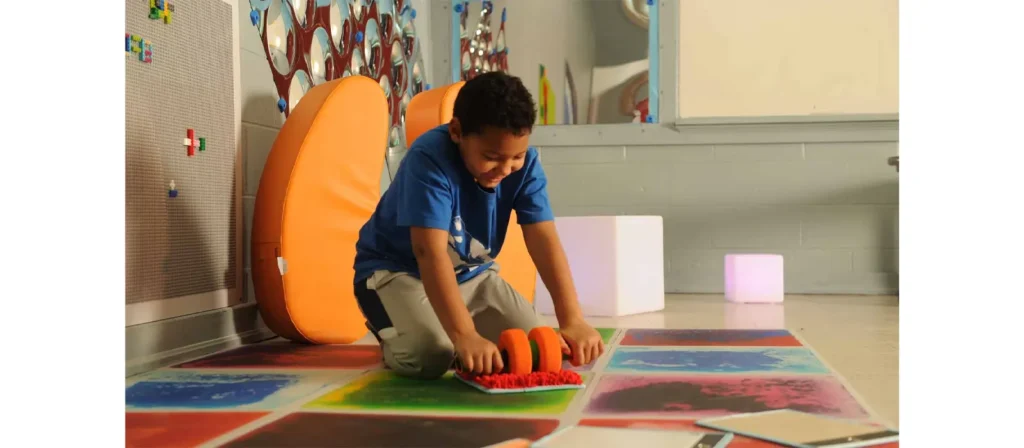
1. Observation
- Utilisation des enfants : Suivez la fréquence et la durée d'utilisation du coin détente par les enfants. L'utilisent-ils lorsqu'ils semblent dépassés, contrariés ou surstimulés ?
- Comportement avant et après : Observez l'état émotionnel de l'enfant avant et après avoir utilisé le coin détente. Est-il plus calme et plus concentré après y avoir passé du temps ?
- Interaction avec les matériaux : Dans le coin détente, soyez attentif aux objets qui attirent les enfants (par exemple, jouets antistress, livres, éclairage tamisé). Cela peut vous donner une idée de ce qui les apaise le plus.
2. Commentaires des enfants
- Auto-évaluation : Interrogez les enfants sur leur expérience du coin détente. Des questions comme « Comment vous sentez-vous après avoir utilisé le coin détente ? » ou « Qu'appréciez-vous dans cet espace ? » peuvent apporter des commentaires précieux.
- Engagement avec le personnel : Vérifiez si les enfants peuvent s’exprimer lorsqu’ils ont besoin d’une pause ou demander un coin calme lorsqu’ils sont contrariés.
3. Changements de comportement
- Régulation émotionnelle : Évaluer si les enfants parviennent à mieux réguler leurs émotions après avoir utilisé le coin détente. Peuvent-ils reprendre l'activité plus rapidement et avec moins de stress ?
- Concentration améliorée : Surveillez si les enfants qui utilisent régulièrement le coin apaisant améliorent leur concentration et leur participation après s’être calmés.
- Réduction des comportements perturbateurs : Vérifiez si les comportements perturbateurs (par exemple, les accès de colère, l’agressivité, le retrait) diminuent après la mise en œuvre du coin apaisant.
4. Commentaires des parents et de la famille
- Rapport à domicile : Certains enfants peuvent avoir des comportements différents à la maison et à l'école. Demandez aux parents s'ils constatent des améliorations émotionnelles similaires ou s'ils ont d'autres suggestions pour le coin détente.
- Cohérence entre les environnements : Les enfants utilisent-ils des techniques similaires pour se calmer à la maison ou ailleurs ? Cela peut indiquer si le coin détente renforce efficacement les stratégies de régulation émotionnelle en dehors du cadre scolaire.
Conclusion
Un coin détente est un outil puissant pour aider les enfants d'âge préscolaire à apprendre à gérer leurs émotions. Il favorise un environnement d'apprentissage positif et les aide à prendre davantage conscience de leurs sentiments et de leurs réactions. Ces mesures peuvent créer un espace stimulant, favorisant le développement émotionnel et la gestion du comportement.
Découvrez notre gamme complète de produits
Accédez à notre catalogue complet comprenant des meubles et des équipements de jeu de qualité supérieure pour les jardins d'enfants et les écoles.

